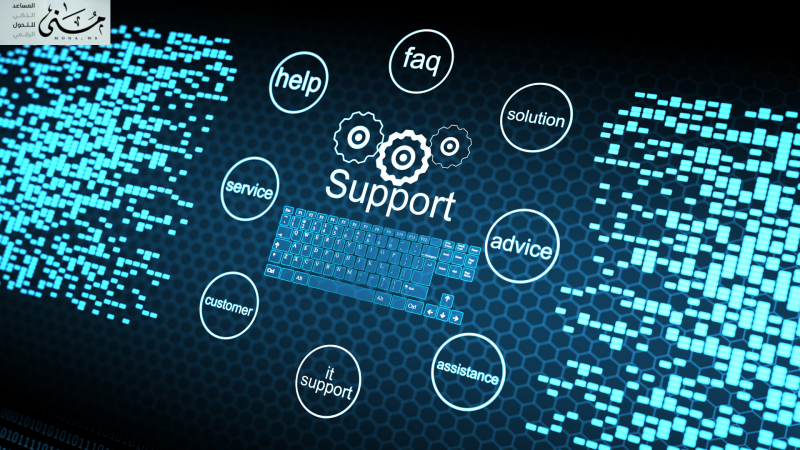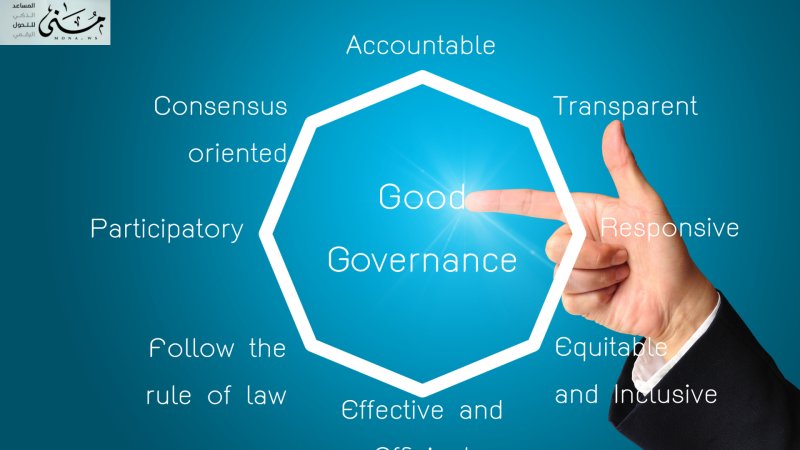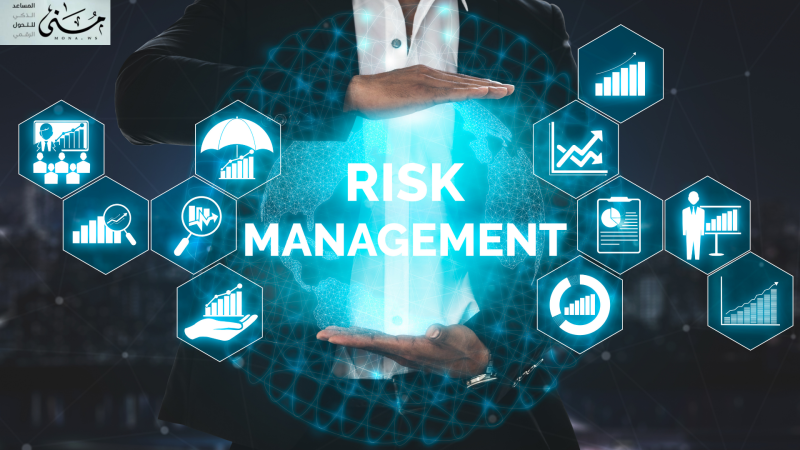The concept of procedural governance has emerged as one of the effective tools for controlling and organizing the workflow within institutions, which helps improve performance, reduce risks, and ensure compliance with approved standards and policies.
You can continue reading the article to learn more about the governance of procedures.
MWhat is procedural governance?
Procedural governance is defined as establishing a clear framework for monitoring and controlling all processes within an organization, with the aim of improving efficiency, reducing risks, and ensuring compliance with internal policies and external laws. Governance is based on the principles of transparency, accountability, and sustainability, to ensure that decisions are made based on accurate data and clear standards.
Organizations that effectively implement process governance achieve higher levels of performance, ensuring that every action is carried out to specific standards, which improves productivity and reduces errors and operational costs.
When applying the concept of governance, responsibilities are clearly defined, and mechanisms are designed to monitor performance, allowing managers and employees to work within a system that efficiently achieves institutional goals. Governance is not limited to large institutions only, but can be applied in all sectors, from small companies to government institutions.
Important statistics about governance of procedures
According to global reports, organizations that rely on procedural governance achieve a 30% improvement in productivity and a 40% reduction in operational risks, in a study conducted by the Organization for Economic Co-operation and Development ((OECD) found that 75% of companies with clear governance practices grow faster than their counterparts without a strong governance system.
In addition, 90% of organizations that rely on advanced electronic systems to manage procedures, such as document management systems and administrative communications, witnessed a significant decrease in human errors and a 50% increase in operational efficiency, confirming that digital transformation is one of the key factors in achieving successful governance.
Evolution of Procedural Governance Systems
In recent decades, the governance of procedures has witnessed a significant development, as organizations have moved from traditional paper-based systems to advanced digital systems based on artificial intelligence, process automation, and big data analysis. Organizations have come to rely on specialized software to organize procedures, such as document management systems, and enterprise resource planning systems (ERP), which enables the ability to track operations and analyze performance accurately.
One of the most prominent modern technologies in this field is intelligent process management systems that enable organizations to fully automate their operations, reducing the need for human intervention, thus reducing errors, and improving efficiency. For example, systems such as DocSuite provide integrated solutions for managing procedures effectively, as they allow for tracking documents, managing administrative communications, and ensuring compliance with internal laws and policies with ease.
Challenges to Procedural Governance
Despite the great benefits of procedural governance, there are many challenges that organizations may face when implementing it, the most important of which are:
Resistance to changeEmployees often have difficulty adapting to new systems, especially when moving from traditional procedures to digital systems.
Systems complexitySome of the technical solutions used in governance of procedures can be complex, requiring extensive training of staff to ensure their efficient use.
high initial costsInvesting in modern digital systems may be expensive initially, but it yields significant savings in the long run.
Ensure compliance and conformityGovernance requires compliance with ever-changing legal and regulatory standards, making it necessary to update policies and systems periodically.
Reliable systems for governance of procedures
There are many systems that can help organizations achieve effective governance of procedures, the most prominent of which are:
Document management systemsDMS):These systems allow all documents and associated procedures to be managed electronically, improving governance and reducing errors.
Enterprise Resource Planning Systems (ERP)ERP):These systems provide comprehensive integration between the various departments of the organization, which enhances transparency and efficiency.
Robotic Process Automation Systems (RPA)RPA):It helps in performing routine operations automatically, which reduces human intervention and increases the accuracy of procedures.
Digital transformation platforms:It provides integrated solutions that combine document management, administrative communications organization, and procedure automation, facilitating the effective implementation of governance principles, including:
- Microsoft SharePoint (Microsoft SharePoint)
It isMicrosoft SharePoint is one of the most widely used systems for managing documents and procedures within large organizations, as it provides an integrated environment for sharing files, organizing workflow, and controlling access to data. It relies on cloud computing technologies, allowing content to be managed securely and smoothly across different teams.
- Doc Sweet (Docsuite)
Doc Suite SystemIt is one of the most powerful enterprise content management systems, as it enables organizations to organize their big data, apply strict governance to work procedures, and provide artificial intelligence tools to analyze data and make accurate decisions based on the available information.
- Documentum (Documentum)
It is consideredDocumentum is a leading content management system that provides an integrated solution for document and procedure governance within organizations, while ensuring compliance with regulatory requirements. It is distinguished by its strong capabilities in managing document lifecycles, and automating approval and review processes within large organizations.
- Alfresco (Alfresco ECM)
systemAlfresco is an open source enterprise content management platform used by companies that need strong document governance with flexibility for customization and integration with other systems. It is easy to use and can be operated via the cloud, making it an ideal choice for companies looking for an effective solution at a lower cost.
- IBM FileNet (IBM FileNet)
It isIBM FileNet is a powerful enterprise content management system that relies on artificial intelligence technologies to automate processes and improve operational efficiency. This system is used in many sectors such as banking, insurance, and governments, as it ensures complete control over the life cycle of documents and procedures.
- Laser fish (Laserfiche ECM)
He providesLaserfiche is an advanced solution for automating administrative processes, with advanced features in document management, transaction tracking, and ensuring compliance with corporate policies. This system is used in many government and private institutions around the world to achieve effective governance of procedures.
- SAP ECM (SAP Extended ECM)
It is consideredSAP Extended ECM is a powerful solution that combines enterprise content management and process governance, working in full integration with SAP ERP systems, allowing documents and procedures to be managed more organized and efficiently, especially in large organizations that rely on resource planning.
- NINTEX (Nintex Process Automation
It is consideredNintex is one of the best solutions in process automation and procedure governance, as it provides flexible tools for creating workflows, analyzing performance, and ensuring compliance with governance requirements. It is characterized by ease of use and the ability to integrate with other systems such as Microsoft 365 and Salesforce.
- Pizza (Bizagi BPM)
systemBizagi specializes in Business Process Management (BPM), helping companies design, implement and analyze administrative processes in a flexible and fast way, while improving operational efficiency and reducing errors.
Comparison between governance and procedural governance
|
The element |
GovernanceGovernance |
Procedural GovernanceProcess Governance |
|
Definition |
It is the general framework that defines how an organization is managed, decisions are made, and compliance with legal and ethical standards is ensured. |
Focuses on managing and organizing operational processes and procedures within the organization, with the aim of improving efficiency and reducing risks. |
|
Scope |
It includes all administrative, financial, operational, and supervisory aspects within the organization. |
It mainly focuses on organizing and directing operational processes and procedures according to specific standards. |
|
Objectives |
- Achieving transparency and accountability. - Enhancing compliance and adherence to laws. - Improving institutional performance and effective management of resources. |
- Improving the quality and efficiency of operational processes. - Reduce errors and operational costs. - Enhancing automation and achieving effective control. |
|
Application areas |
It is applied at the level of senior management and executive boards to ensure the good management of the entire organization. |
Applies to internal processes and operational procedures to ensure they are implemented according to clear standards. |
|
Approved standards |
It depends on criteria such as:ISO 37000 for corporate governance, OECD standards for corporate governance |
It depends on criteria such as:ISO 9001 for quality management, BPMN standards for business process management. |
|
The relationship between them |
Governance is the broader framework that encompasses all management and control practices within an organization. |
Procedural governance is part of general governance and aims to ensure that operational processes are implemented in accordance with specified rules and standards. |
|
Supporting technologies |
It relies on governance, risk and compliance management systems (GRC). |
Based on business process management systems (BPM) and workflow automation systems such as DocSuite, Microsoft SharePoint, and SAP ECM. |
In conclusion, governance is the broader concept that includes all management and control practices within the organization, while procedural governance focuses on organizing operational processes and improving their efficiency. Both concepts complement each other, as successful organizations rely on strong governance that ensures sound management, and effective procedural governance that ensures smooth and accurate implementation of operations.
Procedural governance has become an imperative in the modern business world, helping organizations improve efficiency, reduce risk, and ensure compliance. Modern technological developments, such as process automation and data analytics, have played a major role in facilitating the implementation of governance and making it more effective.
 ساعد مؤسستك على تحسين الكفاءة، وتقليل المخاطر مع حوكمة الإجراءات
ساعد مؤسستك على تحسين الكفاءة، وتقليل المخاطر مع حوكمة الإجراءات











Comments
Add New Comment